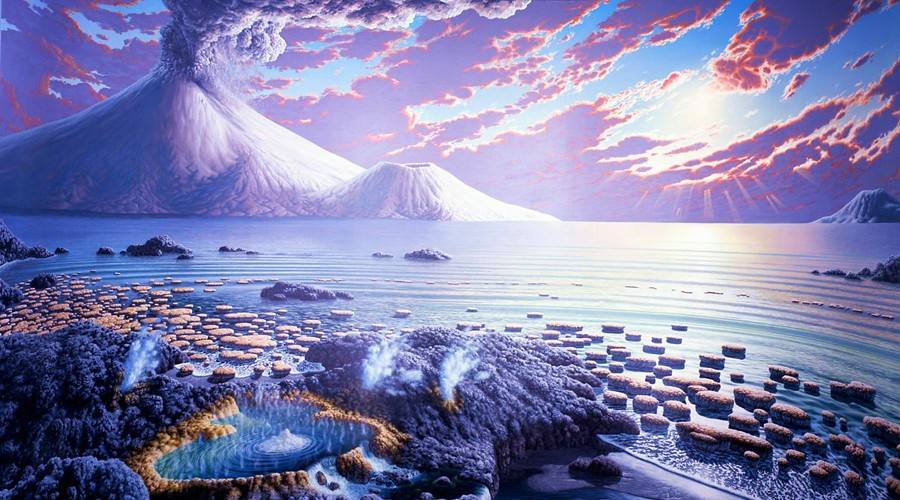第十九章 生命的起源
In 1953, Stanley Miller, a graduate student at the University of Chicago, took two flasks—one containing a little water to represent a primeval ocean, the other holding a mixture of methane, ammonia, and hydrogen sulphide gases to represent Earth's early atmosphere—connected them with rubber tubes, and introduced some electrical sparks as a stand-in for lightning. After a few days, the water in the flasks had turned green and yellow in a hearty broth of amino acids, fatty acids, sugars, and other organic compounds. "If God didn't do it this way," observed Miller's delighted supervisor, the Nobel laureate Harold Urey, "He missed a good bet."
1953年,芝加哥大學(xué)的研究生斯坦利·米勒拿起兩個長頸瓶——一個盛著一點水,代表遠古的大海洋,一個裝著甲烷、氨和硫化氫的氣體混合物,代表地救上早期的大氣——然后用橡皮管子把兩個瓶子一連,放了幾次電火花算做閃電。幾個星期以后,瓶子里的水呈黃綠色,變成了營養(yǎng)豐富的汁,里面有氨基酸、脂肪酸、糖以及別的有機化合物。米勒的導(dǎo)師、諾貝爾獎金獲得者哈羅德·尤里欣喜萬分,說:“我可以打賭,上帝肯定是這么干的。”

Press reports of the time made it sound as if about all that was needed now was for somebody to give the whole a good shake and life would crawl out. As time has shown, it wasn't nearly so simple. Despite half a century of further study, we are no nearer to synthesizing life today than we were in 1953 and much further away from thinking we can. Scientists are now pretty certain that the early atmosphere was nothing like as primed for development as Miller and Urey's gaseous stew, but rather was a much less reactive blend of nitrogen and carbon dioxide. Repeating Miller's experiments with these more challenging inputs has so far produced only one fairly primitive amino acid. At all events, creating amino acids is not really the problem. The problem is proteins.
當時的新聞報道聽上去讓人覺得,你只要把瓶子好好地晃一晃,生命就會從里面爬出來。時間已經(jīng)表明,事情根本不是那么簡單。盡管又經(jīng)過了半個世紀的研究,今天我們距離合成生命與1953年的時候一樣遙遠——更不用說認為我們已經(jīng)有這等本事。科學(xué)家們現(xiàn)在相當肯定,早斯的大氣根本不像米勒和尤里的混合氣體那樣已經(jīng)為生命的形成作好準備,而是一種根本很不活潑的氮和二氧化碳的混合物。有人用這些更具挑戰(zhàn)性的氣體重新做了米勒的實驗,至今只制造出一種非常原始的氨基酸,無論如何,其實問題不在于制造氨基酸,問題在于蛋白質(zhì)。
來源:可可英語 http://www.ccdyzl.cn/Article/201805/553926.shtml











